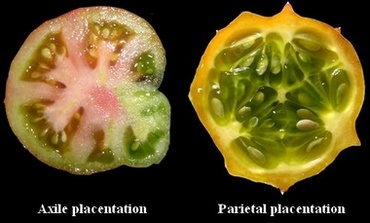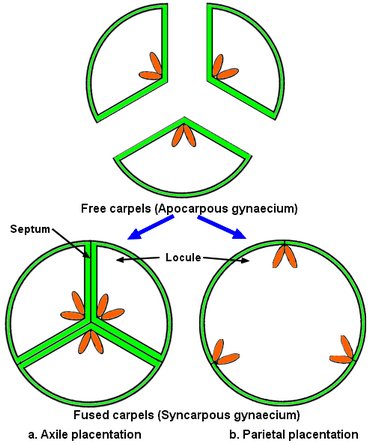Definitions and utility of an herbarium. The realization of an herbarium is always of topicality. An herbarium consists of dried plants, then fixed on paper boards without acid, protected by tracing paper and hard-bound shirts. The herbarium term indicates also the places where these dried plants are stored.  The most significant herbaria in the world, in a number of exsiccata (dried plants) are that of the national Natural history museum of natural history (8 million samples) then that of the royal Botanical garden of Kew. The herbaria can be private or institutional. Currently, undoubtedly because of budgetary restrictions, of many botanical gardens pose the problem of the utility of an herbarium. Utility of the herbaria There is a few years the constitution of an herbarium was obligatory in many courses school or university and all the botanical gardens had some. Currently, some discuss the need for an herbarium whereas its uses are numerous (Raynal-Castlings, 1994). The herbarium is a died vegetable collection. It presents an objectivity and an unquestionable reality compared to photographs. Thus, a dried plant can be given once again after hydration. The herbarium thus allows the potential validation of identifications carried out on the ground. The herbarium is an image at times given of the vegetation of various sites. It is thus possible to evaluate the evolution of the biodiversity. It makes it possible to establish cartographic inventories of the plants. The herbarium allows comparisons between different taxon and of the systematic studies. The boards of herbarium can be lent easily between various institutions of the whole world whereas it would be difficult to exchange material living or to organize forwardings on the ground. Some think, wrongly, that the herbarium can be replaced by images digitized on CD-Rom. Several reasons are opposed to this argument. On the one hand, the investment necessary and its maintenance (multi-media computer, numerical camera, memory) are often out of reach many botanical gardens. In addition, the many keys necessary to the identification of a plant should be replaced per as many photographs: the quantity of memory to be managed would become, in the current of the techniques, extremely difficult, and in all the cases, very expensive state. Moreover, certain floral aspects neglected at a time given thus not memorized can prove, in the future, paramount. In this case, only the possession of the dried plant will make it possible to validate the determination.
The most significant herbaria in the world, in a number of exsiccata (dried plants) are that of the national Natural history museum of natural history (8 million samples) then that of the royal Botanical garden of Kew. The herbaria can be private or institutional. Currently, undoubtedly because of budgetary restrictions, of many botanical gardens pose the problem of the utility of an herbarium. Utility of the herbaria There is a few years the constitution of an herbarium was obligatory in many courses school or university and all the botanical gardens had some. Currently, some discuss the need for an herbarium whereas its uses are numerous (Raynal-Castlings, 1994). The herbarium is a died vegetable collection. It presents an objectivity and an unquestionable reality compared to photographs. Thus, a dried plant can be given once again after hydration. The herbarium thus allows the potential validation of identifications carried out on the ground. The herbarium is an image at times given of the vegetation of various sites. It is thus possible to evaluate the evolution of the biodiversity. It makes it possible to establish cartographic inventories of the plants. The herbarium allows comparisons between different taxon and of the systematic studies. The boards of herbarium can be lent easily between various institutions of the whole world whereas it would be difficult to exchange material living or to organize forwardings on the ground. Some think, wrongly, that the herbarium can be replaced by images digitized on CD-Rom. Several reasons are opposed to this argument. On the one hand, the investment necessary and its maintenance (multi-media computer, numerical camera, memory) are often out of reach many botanical gardens. In addition, the many keys necessary to the identification of a plant should be replaced per as many photographs: the quantity of memory to be managed would become, in the current of the techniques, extremely difficult, and in all the cases, very expensive state. Moreover, certain floral aspects neglected at a time given thus not memorized can prove, in the future, paramount. In this case, only the possession of the dried plant will make it possible to validate the determination.
Axile or parietal placentation in fused carpels
The following pictures show the 2 main categories of placentation : – when placentation is axile, placentas link seeds and fruit axis : example of a tomato (Lycopersicon esculentum, Solanaceae), – when placentation is parietal, placentas link seeds and fruit wall : example of a kiwano (Cucumis metuliferus, Cucurbitaceae).  The following sketch explains the different evolution states from free carpels in an apocarpous gynaecium to fused carpels in a syncarpous gynaecium with axile or parietal placentations: – Axile placentation. Carpel sides are fused together in septa (plural of septum). Carpel margins are found on the axis of the composed ovary. Ovary is plurilocular. Placentas (conducting tissue for ovules) and ovules are located along the ovary axis: placentation is axile. – Parietal placentation. Carpels are fused by their margins and placentas develop along the composed ovary wall. Ovary is unilocular.
The following sketch explains the different evolution states from free carpels in an apocarpous gynaecium to fused carpels in a syncarpous gynaecium with axile or parietal placentations: – Axile placentation. Carpel sides are fused together in septa (plural of septum). Carpel margins are found on the axis of the composed ovary. Ovary is plurilocular. Placentas (conducting tissue for ovules) and ovules are located along the ovary axis: placentation is axile. – Parietal placentation. Carpels are fused by their margins and placentas develop along the composed ovary wall. Ovary is unilocular. 
Xylem and phloem saps
Two sap categories can be found in a vascular plant: – a sap containing water and minerals taken from the soil by the roots. It is conducted by a tissue called xylem. The xylem sap mainly goes from the roots to the photosynthesis sites (usually leaves): it is often called ascending sap in French. The ascent of xylem sap depends on transpiration and water physical properties: the solar-powered bulk flow. – a sap containing water and solutes, such as amino acids or sugars, mainly sucrose created by photosynthesis. It is conducted by a tissue called phloem. The phloem sap mainly goes from the leaves to other parts of the plant, especially roots. It is often called descending sap in French but this definition doesn’t take into account translocation of phloem sap from reserve organs (tubers for example) to other parts of the plant. The translocation of phloem sap is powered by the difference of osmotic pressure between sugar sources (where sugars mainly sucrose are produced) and sugar sinks (where sugar are consumed): the mass flow hypothesis.
Xylem structure
Xylem cells are the following: – vessels or tracheids. Vessels are told perfect when there is no transverse wall and when all elements are joined together to reach a length that can reach many meters. Tracheids are imperfect vessels because they have a transverse wall with a lumen more or less important. Tracheids are present in basal (primitive) vascular plants such as Ferns and allies, or Gymnosperms.
Phloem structure
Phloem cells are the following: – sieve elements that are joined together to form sieve tubes, – companion cells, transfer cells: companion cells perform metabolic functions for the sieve elements (ATP or proteins synthesis…); transfer cells help sieve elements to transfer metabolites, – intermediary cells are sometimes present to help connections between bundle sheath, parenchyma cells and sieve elements.
